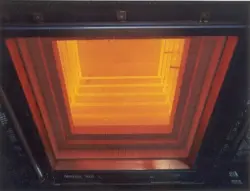Silicone Carbide (SiC) furnace heating elements
Keith Company uses Silicon Carbide (SiC) elements in many of our high temperature furnaces and kilns. They are self-supporting, which enables them to be used in furnaces and kilns that are too wide or too long to be spanned by metallic or MoSi2 heating elements. They are capable of higher operating temperatures and higher watt loadings than metallic elements and are relatively easy to change while the furnace is hot.
Silicon carbide element manufacturers typically produce a family of elements using different grades of material and different manufacturing techniques to tailor each product to a specific range of application. The effects of furnace atmosphere on SiC element (Maximum Element Temperature) MET needs to be considered in designing the furnace. The lowest METs is achieved in vacuum, both because any protective silicon dioxide layer formed by pre-oxidation will deteriorate under hard vacuum and because SiC actually vaporizes at elevated temperature under high vacuum conditions.
All SiC heating elements oxidize (or otherwise react with the furnace atmosphere) and increase in resistance during their life in operation. Eventually, they either can no longer generate sufficient heat or they fail mechanically, and in either case they must be replaced. Traditionally, SiC heating element power supplies have been designed to supply full-rated power even if the element increases in resistance to four times the new element resistance (a 300% resistance increase). Practically speaking, such a high resistance increase is seldom reached. An allowance for a factor of two to three increases (100-200%) is usually sufficient.
Advantages:
- Available in a wide range of shapes and sizes
- Self-supporting, they can be used in furnaces that are too wide or too long to be spanned by metallic or MoSi2 heating elements
- Capable of higher operating temperatures and higher watt loadings than metallic elements
- Relatively easy to change while the furnace is hot
Disadvantages:
- More costly power control equipment than for metallic elements (multi-tap transformer required)
- Electrical resistance increases with time (aging), meaning more maintenance attention (transformer tap changing and group replacement) is required than for metallic or MoSi2 elements
- Ceramic material risk of fracture






